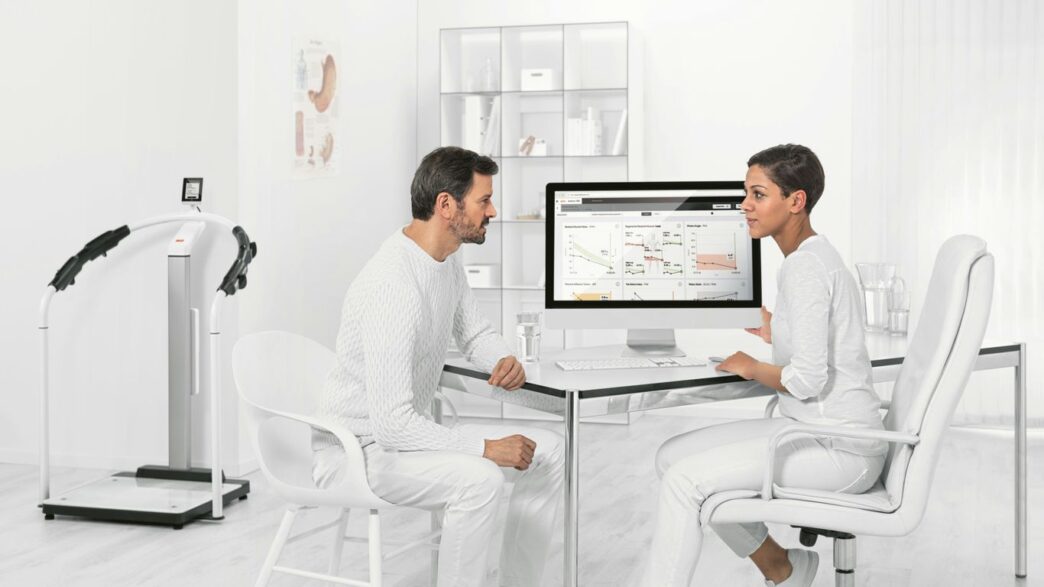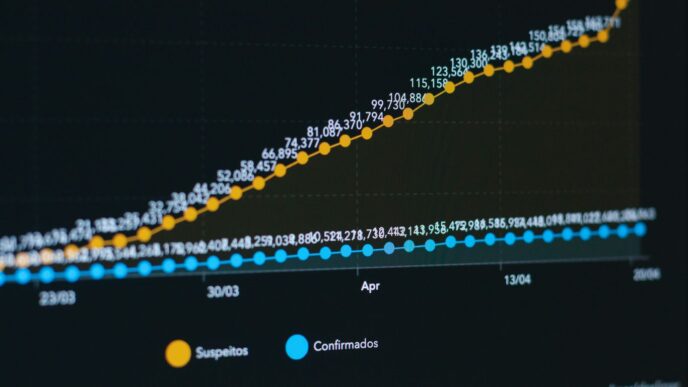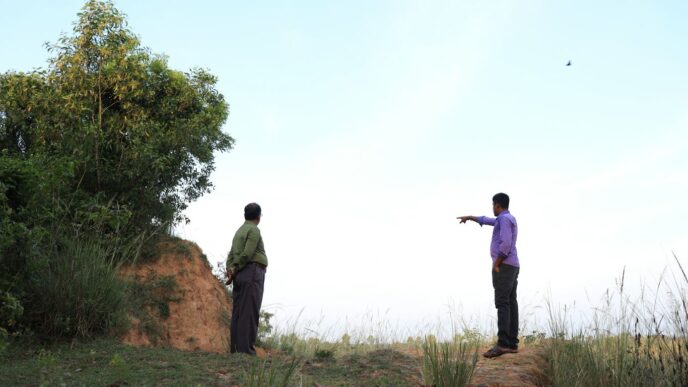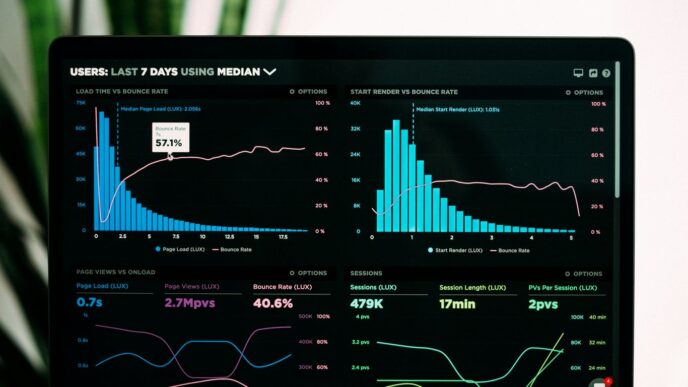So, I’ve been reading up on this whole digital twin thing in healthcare. It sounds pretty wild, honestly. Basically, it’s like creating a super-detailed digital copy of a patient, or even a whole hospital system. The idea is to use this digital copy to figure out the best way to treat someone, test out new medicines, or just make hospitals run smoother. It’s a big shift from how things used to be done, and while it’s not perfect yet, it seems like it could really change how we get medical care in the future.
Key Takeaways
- Digital twins create virtual copies of patients or healthcare systems to help plan treatments and improve operations.
- These virtual models allow doctors to test different treatments on a digital copy before trying them on a real person.
- Digital twins can speed up the process of finding new drugs and make surgeries safer and more precise.
- They also help manage hospital resources better and can make healthcare more accessible, especially for people in remote areas.
- There are still some hurdles to overcome, like keeping data safe and making sure the technology isn’t too expensive or biased.
Personalized Patient Care Through Digital Twins
Imagine having a virtual copy of yourself, a digital twin, that doctors can use to figure out the best way to treat you. That’s the idea behind using digital twins in healthcare, and it’s really changing how we think about patient care. Instead of a one-size-fits-all approach, we can now get treatments tailored specifically to you.
Tailoring Treatment Plans with Patient-Specific Models
This is where digital twins really shine. They’re built using all sorts of your personal health information – think genetic data, medical history, lifestyle habits, even real-time data from wearables. With all this info, a digital twin can create a detailed model of your body. Doctors can then use this model to see how different treatments might work before they’re actually given to you. For example, in cancer care, studies have shown that these patient-specific models can predict how well a particular therapy will work, helping doctors pick the most effective option and potentially cut down on side effects. It’s like having a crystal ball for your health.
Simulating Treatment Scenarios for Optimal Outcomes
Beyond just picking a treatment, digital twins let us run simulations. Let’s say you have a complex heart condition. Surgeons could use a digital twin of your heart to practice a procedure, trying out different approaches to see which one is safest and most likely to succeed. This kind of simulation has already shown promise in reducing complications in surgeries. It also means we can figure out the best dosage for a medication or the ideal timing for a therapy, all based on how your unique digital twin responds in a virtual environment. The goal is always to get the best possible result for you, with the fewest risks.
Leveraging Multi-Omics Data for Precision Therapeutics
What’s really exciting is how digital twins can bring together different types of biological data, often called ‘multi-omics’. This includes your genomics (your genes), proteomics (your proteins), metabolomics (your metabolism), and more. By combining all these layers of information, a digital twin can paint a much richer picture of your health. This allows for what we call ‘precision therapeutics’ – treatments that are incredibly specific. For instance, understanding the complex interplay between your genes and your environment can help identify new targets for drugs or therapies that are designed just for you, making them more effective and safer than ever before.
Advancing Medical Research and Development
Digital twins are really starting to shake things up when it comes to how we do medical research and develop new treatments. It’s not just about looking at individual patients anymore; it’s about building better tools for discovery.
Accelerating Drug Discovery and Development
Think about how long it takes to get a new drug from the lab to the pharmacy. It’s a long, expensive process, and a lot of promising candidates don’t make it. Digital twins can change that. By creating virtual models of drug candidates and testing them against digital patient models, researchers can get a much better idea of how effective and safe a drug might be before it even goes into human trials. This means fewer failed trials and a faster path for drugs that actually work. It’s like having a super-powered simulation lab.
- Predicting Efficacy: Simulating how a drug interacts with a digital twin of a specific disease or patient population.
- Assessing Safety: Identifying potential side effects or toxicities in a virtual environment.
- Optimizing Dosage: Determining the most effective and safest dosage levels through repeated virtual testing.
Enhancing Medical Image Interpretation
Interpreting medical images, like MRIs or CT scans, can be tricky. Radiologists have to spot subtle details, and sometimes, it’s hard to be completely sure. Digital twins can help by providing a more detailed, interactive model based on a patient’s actual scans. This allows for a deeper look at the anatomy and any abnormalities. It’s not about replacing the expert, but giving them a more powerful tool to work with. Imagine being able to virtually peel back layers or zoom in on a specific area with incredible detail. This could lead to earlier and more accurate diagnoses.
Modeling Disease Progression and Spread
Understanding how diseases develop and spread is key to fighting them. Digital twins can create dynamic models that show how a disease might progress in an individual or even how it could spread through a population. This is huge for public health planning. For example, by modeling the spread of an infectious disease, public health officials can test different intervention strategies virtually to see which ones would be most effective at slowing it down. It’s a way to get ahead of the curve and make more informed decisions about how to protect communities.
Optimizing Healthcare Operations and Resource Management
Running a hospital or clinic is like conducting a massive orchestra, and digital twins are the new conductor’s baton. They help make sure all the instruments are in tune and playing at the right time. This technology is transforming how healthcare facilities manage their day-to-day activities.
Streamlining Data Exchange with Healthcare Integration Services
Think about all the different systems in a hospital: patient records, lab results, imaging, billing. They often don’t talk to each other very well. Digital twins, when integrated properly, can act as a central hub. They pull data from these various sources, creating a unified picture. This makes it much easier for doctors and administrators to get the information they need, when they need it. It’s all about making sure the right data gets to the right place without a hitch. This kind of interoperability is key to modern healthcare, allowing for smoother data exchange and better coordination.
Predictive Maintenance for Medical Equipment
Nobody wants to be in a situation where a critical piece of medical equipment breaks down during a procedure. Digital twins can monitor the performance of machines in real-time. By analyzing patterns and usage, they can predict when a piece of equipment might need maintenance before it fails. This means scheduling repairs during off-peak hours, ordering parts in advance, and avoiding costly emergency fixes. It keeps things running smoothly and, more importantly, keeps patients safe.
Here’s a look at how predictive maintenance can work:
- Monitoring: Sensors on equipment feed data to its digital twin.
- Analysis: The twin analyzes performance metrics, wear and tear, and usage history.
- Prediction: Algorithms forecast potential issues and maintenance needs.
- Action: Proactive maintenance is scheduled, and parts are ordered.
Improving Resource Allocation and Tracking
Hospitals have a lot of moving parts – staff, beds, operating rooms, supplies. Digital twins can model these resources and simulate different scenarios. For example, they can help predict patient flow during peak times or after a major event. This allows administrators to make smarter decisions about staffing levels, bed assignments, and even where to stock certain supplies. It’s about making sure the right resources are available where and when they’re needed most, reducing waste and improving efficiency. This can also extend to tracking assets, so valuable equipment isn’t misplaced.
Enhancing Patient Engagement and Accessibility

Digital twins are really changing how patients connect with their own health. Think about apps that let you see your personal health data visualized through your digital twin. You can track how you’re doing, see progress, and make smarter choices about your well-being. It’s like having a personal health dashboard that actually makes sense.
Empowering Patients with Wellness Applications
These apps are designed to get you more involved in your own care. By showing you your health information in a clear way, they help you stick to treatment plans better. This means better results and a healthier you. Plus, these apps make it easier to share information when you see your doctor, leading to more open conversations. It’s about giving you the tools to be an active partner in your health journey.
Facilitating Telemedicine and Remote Monitoring
Digital twins are a big help for telemedicine and keeping an eye on patients from afar. Imagine being able to have a video call with your doctor and they can look at your digital twin data right then and there. They can adjust your treatment plan without you needing to travel. This is super important for people who can’t easily get to a clinic or hospital.
Improving Healthcare Access in Remote Areas
This technology can really make a difference for folks living far from medical centers. By using digital twins for remote monitoring, doctors can keep tabs on patients’ vital signs and health markers from miles away. If something looks off, they can step in early. This means fewer trips to the hospital and more timely care, no matter where you live. It’s a way to bring healthcare closer to home.
The Role of Digital Twins in Surgical Precision
When it comes to surgery, precision is everything. A tiny misstep can have big consequences. That’s where digital twins are really starting to shine, offering surgeons a way to prepare and even practice like never before.
Preoperative Planning for High-Risk Procedures
Imagine being able to walk through a complex surgery in a virtual world before you ever pick up a scalpel. Digital twins make this possible. By creating a detailed, patient-specific virtual model from scans like CT or MRI, surgeons can get a really clear picture of the anatomy they’ll be working with. This isn’t just a static 3D model; it’s a dynamic representation that can show how different tissues might behave. This detailed virtual rehearsal helps identify potential problems and plan the best approach, significantly reducing surprises during the actual operation.
Simulating Interventions in Cardiovascular Surgery
Cardiovascular surgery is particularly complex, and digital twins are proving incredibly useful here. For instance, a digital twin of a patient’s heart can be built using their specific data. Surgeons can then use this model to simulate different surgical techniques, like placing a stent or repairing a valve. They can see how blood flow might change, predict how the heart will respond, and even anticipate potential complications. Studies have shown that using these patient-specific cardiac digital twins can lead to a noticeable drop in postoperative issues, sometimes by around 15%, and help tailor the surgery for a smoother recovery.
Reducing Surgical Risks and Improving Recovery
Ultimately, the goal of using digital twins in surgery is to make procedures safer and help patients bounce back faster. By simulating interventions beforehand, surgeons can refine their techniques and choose the least invasive, most effective path. This virtual practice can:
- Identify anatomical variations unique to the patient.
- Test different surgical tools and approaches virtually.
- Predict how the patient’s body will react to the intervention.
This level of preparation means less time spent in the operating room, fewer unexpected events, and a better overall outcome for the patient. It’s like having a crystal ball for surgery, allowing for more confident and precise interventions.
Addressing Challenges in Digital Twin Implementation

So, we’ve talked a lot about how amazing digital twins can be for healthcare, right? But let’s be real, getting them up and running isn’t exactly a walk in the park. There are some pretty big hurdles we need to jump over before these virtual patient models become standard practice.
Ensuring Data Security and Privacy
This is probably the biggest one. We’re talking about some of the most sensitive information out there – your health records. Keeping all that data locked down tight is non-negotiable. Think about it: a digital twin needs access to everything from your medical history to your genetic makeup and even real-time data from wearables. If that information falls into the wrong hands, the consequences could be disastrous. We need super robust security measures, like advanced encryption and strict access controls, to make sure only authorized people can see anything. Plus, we have to figure out how to handle all this data in a way that respects patient privacy laws, which are already pretty complicated.
Overcoming Infrastructure Costs and Accessibility Barriers
Building and maintaining these digital twins is expensive. We’re talking about needing powerful computing resources, sophisticated software, and a whole lot of skilled people to manage it all. For smaller clinics or hospitals, especially those in less wealthy areas, the cost can be a real showstopper. It’s not just about the initial setup, either. Keeping the systems updated and running smoothly requires ongoing investment. This could create a gap where only the big, well-funded institutions can afford to use digital twins, leaving others behind. We need to find ways to make this technology more affordable and accessible to everyone, not just a select few.
Mitigating Bias and Ensuring Data Quality
Digital twins learn from the data they’re fed. If that data is biased, the twin will be biased too. For example, if historical health data mostly comes from one demographic group, the digital twin might not accurately represent or predict outcomes for other groups. This could lead to unfair or even harmful treatment recommendations. We also need to make sure the data we’re using is accurate and up-to-date. Inaccurate data leads to flawed models, which can result in bad decisions. So, we need processes in place to:
- Clean and validate all incoming data rigorously.
- Actively seek out and include data from diverse patient populations.
- Regularly audit the digital twin’s performance to catch and correct any emerging biases or inaccuracies.
It’s a complex puzzle, but tackling these challenges head-on is key to making digital twins a safe and effective tool for everyone.
The Road Ahead
So, what does all this mean for the future of healthcare? Basically, digital twins are changing the game. They let doctors get super specific with treatments, almost like having a crystal ball for your health. We’re seeing them used everywhere, from figuring out the best way to treat cancer to planning tricky surgeries. Plus, they help keep track of patients outside the hospital, which is a big deal for folks with long-term illnesses. It’s not just about the fancy tech, though. It’s about making healthcare work better, cost less, and ultimately, help people live healthier lives. There are still some hurdles, like making sure all the data is safe and that everyone can actually use these tools, but the direction is clear. Digital twins are a big part of where healthcare is headed.
Frequently Asked Questions
What exactly is a digital twin in healthcare?
Think of a digital twin as a super-detailed computer copy of a real person, a body part, or even a whole hospital. It’s like a virtual version that gets updated with real information, so doctors can see what’s happening and try out different treatments or plans in the computer before doing anything in real life.
How do digital twins help make treatments more personal?
Digital twins are amazing for making healthcare just for you. By using all your health info – like your genes, medical history, and even data from your smartwatch – doctors can create a unique digital copy of you. This helps them figure out the very best treatment plan that’s perfect for your body and your specific health problem.
Can digital twins help doctors practice surgery?
Yes, they absolutely can! Before a tricky surgery, doctors can use a digital twin of a patient’s body part, like a heart, to practice the operation. They can try different steps, see what might go wrong, and plan the best way to do it. This helps make surgery safer and helps patients recover faster.
How do digital twins help with medical research?
Researchers can use digital twins to study diseases better. They can create virtual models of how diseases spread or how they affect the body. This helps them find new medicines faster and understand illnesses more deeply, all without needing to test on real people right away.
Are digital twins safe to use with my health information?
Keeping your health information safe is super important. Companies making digital twins work hard to protect your data. They use special security measures, like coding information, to make sure only the right people can see it and that it’s not shared without your permission.
Will digital twins make healthcare more expensive?
While setting up the technology for digital twins can cost money at first, the goal is to actually save money in the long run. By helping doctors choose the best treatments, preventing problems before they happen, and making hospital operations smoother, digital twins can lead to more efficient and less costly healthcare.














